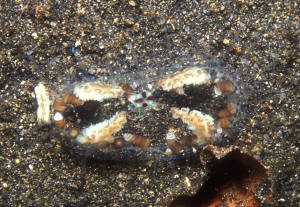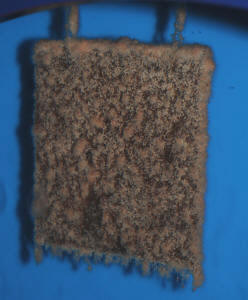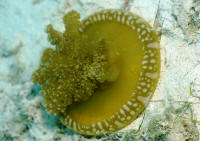|
Related FAQs: Scyphozoan Jellies,
Jellies 2,
Jelly Identification, Jelly Behavior, Jelly Compatibility, Jelly Selection, Jelly Systems, Jelly Feeding, Jelly Disease, Jelly Reproduction,
Related Articles: Scyphozoans,
/A Diversity of Aquatic
Life
The Scyphozoan Jellyfishes
|

|
| Bob
Fenner |
Upside down Jelly
|
| A "plate" of strobilizing Aurelia aurita
on display at the Stephen Birch Aq., SIO. Such sources of
Scyphozoans and Hydrozoans are commonly introduced on hard surfaces
(e.g. Live Rock, Stony Coral bases...) |

|
| Cassiopeia, the "Upside-down
Jellyfish". Sometimes sold as an aquarium species. These are
shallow water lagoon and mangrove swamp animals that use both
photosynthesis (via symbiotic algae) and many small mouths
scattered on their "tentacles" (eight oral-arms) to
suck-in zooplankton for food. Favored foods of Ocean Sunfishes and
marine turtles. |
 
|
| Cassiopeia frondosa. Here in Jamaica |

|
| Chrysaora quinquecirrha. a darling of public
aquariums. One of a few "sea nettles". Here at the Shaw
Centre, Victoria, B.C., Canada 2010 |
%20BC%20MD.jpg)
|
| Nausithoe punctata Kolliker 1853. "0.9
to 1.5 cm. wide, discodial, central disk thick, without radiating furrows,
finely punctured; gastral filaments not grouped in clusters; large gonads."
"Members of the class Scyphozoa are gonochoric. Life cycle: Egg is laid by
the adult medusa which later develops into a free-living planula, then to a
scyphistoma to a strobila, and lastly to a free-living young medusa "
https://www.sealifebase.ca/summary/Nausithoe-punctata.html Here
scyphistomes are infesting a sponge in the Red Sea 2019. |
%20crop%20MD.JPG)
|
|
|

